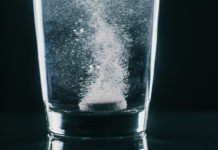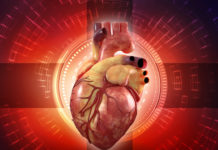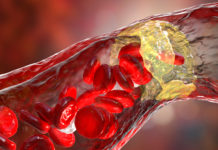Natural Supplement Lowers Elevated Serum Cholesterol Levels
By Jim English
Elevated serum cholesterol levels (hypercholesterolemia) are a recognized risk factor for developing Coronary Heart Disease (CHD), the leading cause of death in the United States. (1) Standard approaches for controlling hypercholesterolemia include dietary modifications, lifestyle changes, drug therapy and dietary supplements. While moderately effective, most of these approaches suffer from serious drawbacks: patient compliance issues (diet and lifestyle changes), safety (drug side effects) and cost (drugs).
A newly available food-source supplement has recently been shown effective at lowering total cholesterol levels, reducing LDL and triglyceride levels, and increasing HDL levels. The supplement, Red Yeast Rice Extract, is an exciting new addition to the existing armamentarium of natural supplements that have been shown to safely and effectively reduce moderately elevated cholesterol levels.
Cholesterol
Cholesterol, a lipid (fatty) component of all cellular membranes, is required to support cellular integrity and for the biosynthesis of vital hormones. Cholesterol levels can be influenced by dietary modification (i.e.. reducing one’s intake of saturated and transfatty acids) but the majority of cholesterol (about 80%) isn’t derived by dietary sources but is synthesized by the liver. Biosynthesis of cholesterol is controlled by the rate limiting enzyme, HMG-CoA (3-hydroxy-3-methylglutaryl coenzyme A) reductase.
Normally, cholesterol levels are regulated by the liver via a biochemical feedback loop. When cholesterol levels are low, liver production of HMG-CoA reductase leads to increased biosynthesis of cholesterol. Conversely, when cholesterol levels are elevated, the liver reduces production of HMG-CoA reductase, halting further production of cholesterol. The proper functioning of this feedback mechanism is vital for the maintenance of healthy cholesterol levels. Unfortunately modern dietary habits and lifestyle contribute to the disruption of this system, leading to elevated cholesterol levels and increased risks for developing CHD.
Traditional Treatments For Hypercholesterolemia
Controlling total blood cholesterol levels can be an important step to lowering one’s risk for developing CHD. For most people, modifications in lifestyle may be enough to normalize cholesterol levels. Such modifications can include dietary changes, moderate exercise, and regular use of antioxidants and other nutrients.
For those individuals who don’t respond to these methods, or for those with a genetic predisposition to hypercholesterolemia, standard medical therapy will employ drugs to bring cholesterol under control. Among the current pharmaceutical agents of choice for lowering LDL cholesterol levels are the bile acid sequestrants, cholestyramine and colestipol. Unfortunately, according to the American Heart Association, bile acid sequestrants have troublesome side effects and require considerable patient education to achieve compliance. A recently introduced class of drugs used to aggressively treat elevated LDL levels are the synthetically derived HMG-CoA reductase inhibitors, lovastatin (Mevacor®), pravastatin and simvastatin.
Statin Drugs
Statin drugs are among the most potent lipid-lowering agents currently available. Statin drugs lower cholesterol levels by inhibiting the production HMG-CoA reductase, resulting in a decrease in cholesterol synthesis in the liver. (2) To compensate for the resulting reduction of cholesterol production the liver increases absorption of LDL cholesterol, further contributing to an overall reduction in blood LDL cholesterol levels.
Statin therapy has contributed to the substantial decrease in CHD morbidity and mortality in recent years, as documented in a number of controlled clinical trials. (3) Although statin therapy was first used for patients suffering from severe hypercholesterolemia, more recent trials have shown benefit for patients with moderately elevated cholesterol. In addition to improvements in lipid profile, statins appear to confer other benefits, including improved endothelial function, decreased platelet thrombus formation, improved fibrinolytic activity and reduction in frequency of transient myocardial ischemia. (3,4)
Statins Inhibit Co-Q10
While statin drugs are effective at lowering LDL cholesterol, they have serious side effects. Statins work by inhibiting 3-hydroxy-3-methylglutaryl-coenzyme A reductase, the enzyme involved in the biosynthesis of cholesterol from acetyl-CoA. In 1990 Folkers and colleagues theorized that inhibition of this key enzyme would also inhibit the intrinsic biosynthesis of coenzyme Q10 (CoQ10), a central compound in the mitochondrial respiratory chain. The researchers stated that “If lovastatin were to reduce levels of CoQ10, this reduction would constitute a new risk of cardiac disease, since it is established that CoQ10 is indispensable for cardiac function.”
The researchers reported on protocols involving five hospitalized patients, 43-72 years old, and one volunteer who was monitored for CoQ10 and cholesterol levels and cardiac function. All data from the protocols revealed that lovastatin does indeed lower levels of CoQ10. The five hospitalized patients taking lovastatin evidenced an increase in cardiac disease from lovastatin, which was life-threatening for patients having class IV cardiomyopathy before lovastatin or after taking lovastatin. Oral administration of CoQ10 increased blood levels of CoQ10 and was generally accompanied by an improvement in cardiac function.
The researchers concluded that “Although a successful drug, lovastatin does have side effects, particularly including liver dysfunction, which presumably can be caused by the lovastatin-induced deficiency of CoQ10.” (5)
In a second study designed to evaluate the effects of statins on coenzyme-Q10 serum level and mitochondrial function, researchers measured ubiquinone serum level and blood lactate/pyruvate ratios in 80 patients diagnosed with hypercholesterolemia. (9) At the end of the study lactate/pyruvate ratios were significantly higher in the patients treated with statins than in the control group, indicating reduced mitochondrial function. Additionally, Co-Q10 serum levels were lower in the statin treated group (0.75 mg l-l) than in the control (0.95 mg l-l).
Statin drugs are also expensive to use – depending on the drug and dosage, statin therapy can cost between $63-$228 per month. (6)
Searching For Affordable Alternatives
To deal with the prohibitive cost of statins, researchers in China have been examining traditional Chinese medicinal compounds in a search for more affordable alternatives to controlling cholesterol levels. (2) One of the most promising prospects was a natural food product called red yeast rice. Red yeast rice is used extensively in Chinese cooking as a flavoring agent and food coloring for dishes such as tofu, Peking duck and Chinese spareribs. Also known as Hung-chu or Hong-Qu, red yeast rice is manufactured by fermenting rice with a specific strain of yeast called Monascus purpureus, Went. Red yeast rice has been revered for its health-enhancing properties for over two thousand years – records dating back to the Ming Dynasty (1368-1644) describe red yeast’s role in promoting a healthy cardiovascular system by improving blood circulation and reducing clotting. (7)
Chinese researchers discovered that red yeast rice contains a number of compounds – the most abundant of which is lovastatin, the same cholesterol-lowering ingredient found in pharmaceutical statins such as Mevacor – that act as HMG-CoA reductase inhibitors. Researchers also reported finding a number of naturally occurring unsaturated fatty acids that appear to promote lower triglyceride levels while increasing HDL levels.
Clinical Research
Red yeast rice’s ability to reduce serum cholesterol levels has been demonstrated in a number of clinical trials in China, and more recently in the U.S. In China, researchers conducted a randomized, single-blind trial with 502 patients diagnosed with hyperlipidemia.2 Patients either had a serum total cholesterol (TC) of at least 230 mg/dL, LDL of at least 130 mg/dL, or tryglycerides (TG) of 200-400 mg/dL. All patients also had HDL levels less than or equal to 40 mg/dL for men, or HDL less than or equal to 45 mg/dL for women.
Patients were randomized into one of four groups: three treatment groups (A, C, and D), and a control (B). Patients in the treatment groups were given 600 mg of red yeast rice twice a day (1200 mg/d) Patients in the control group were given Gynostemma pentaphylla, a Chinese herb with putative hypolipidemic properties, three tablets twice a day (1200 mg/d). 446 patients completed the study.
After four weeks of therapy with red yeast rice, improvements in lipid chemistry showed substantial benefit:
- LDL levels of the treatment group declined an average of 24.6% versus only 6.3% in the control group.
- Serum triglyceride levels declined, an average of 19.8% in the treatment group versus 9.2% in controls.
- HDL levels increased by 12.8% in the treatment versus only 4.9% in the control group.
- Total cholesterol levels decreased significantly by 17.1% in the test subjects, compared to a drop in the control group of only 4.8%.
Benefits continued to accrue over the course of the eight week study, with patients in the treatment group achieving an average reduction in total cholesterol of 22.7% (p-value < 0.001) versus a 7% average reduction in the control group. LDL reduction was significantly greater for the treatment group, being reduced by 30.9%. Triglycerides were reduced by 34.1% in the treatment group versus 12.8% and in the control groups. HDL increased by 19.9% versus only 8.4% in the control group.
The authors of the study stated that red yeast rice is a “highly effective and well tolerated dietary supplement that can be used to regulate elevated serum cholesterol and triglycerides.”
In the first American study on red yeast rice, researchers recorded benefits consistent with the scientific studies in China. Dr. David Heber of the University of California at Los Angeles published the report in the American Journal of Clinical Nutrition. The study, a 12-week, double-blind, placebo-controlled study conducted at UCLA, involved 83 volunteers taking a proprietary red yeast rice supplement. Main outcome measures were total cholesterol, total triacylglycerol, and HDL and LDL cholesterol measured at weeks 8, 9, 11 and 12. Total cholesterol concentrations decreased significantly in the red yeast rice-treated group compared with the placebo-treated group. LDL cholesterol and total triacylglycerol were also reduced with the supplement. (8)
“LDL (bad cholesterol) levels dropped 15 percent among patients taking the red yeast supplement over an eight-week period,” said Dr. Heber. “A 15 percent reduction is highly significant. Individuals following a very strict diet – without taking a cholesterol lowering supplement – can only expect to lower their cholesterol by 10 percent at most.”
A second study, directed by Dr. James Rippe of Tufts University School of Medicine in Boston, found similar results. Doctors in 12 medical practices across the country put 233 people on red yeast rice for eight weeks. Their cholesterol levels fell from an average of 242 to 206.
Conclusion
Red yeast has been proven effective in a number of clinical trials at promoting healthy cholesterol levels in subjects with total serum cholesterol greater than 200 mg/dl. and triglyceride levels greater than 200 mg/dl. Lovastatin, the main active ingredient in red yeast rice, has been extensively researched, the results of which lend credible support for the efficacy of red yeast rice in maintaining a healthy cardiovascular system. Red yeast has been proven as effective as pharmaceutical statin drugs, such as Mevacor, but at about one-fifth the cost, and is available without a prescription.
Side Effects
Human studies with red yeast rice extracts show them to be well-tolerated. A small number of side effects, including heartburn, flatulence and dizziness, resolved upon discontinuation of the product.
References
1. National Health and Nutrition Examination Study III (NHANES III, 1988–94) (CDC) NCHS.
2. Wang J, Zongliang L, Chi J, et al. Multicenter clinical trial of the serum lipid-lowering effects of a Monascus Purpureus (Red Yeast) rice preparation from traditional Chinese medicine. Current Therapeutic Research 1997;58(12):964-78.
3. Farmer JA. Aggressive lipid therapy in the statin era. Prog Cardiovasc Dis 1998;41:71-94.)
4. Current and future treatment of hyperlipidemia: the role of statins. Farnier M, Davignon J. Am J Cardiol 1998 Aug 27 82:4B 3J-10J
5. Lovastatin decreases coenzyme Q levels in humans. Folkers K, Langsjoen P, Willis R, Richardson P, Xia LJ, Ye CQ, Tamagawa H. Proc Natl Acad Sci U S A 1990 Nov 87:22 8931-4
6. Perreault S, et al. Treating hyperlipidemia for the primary prevention of coronary disease. Are higher doses of lovastatin cost-effective? Arch Intern Med 1998;158:375-381.)
7. Heber D. Natural Remedies for a Healthy Heart. Garden City Park, NY: Avery; 1998.)
8. Cholesterol-lowering effects of a proprietary Chinese red-yeast-rice dietary supplement. Heber D, Yip I, Ashley JM, Elashoff DA, Elashoff RM, Go VL, Am J Clin Nutr 1999 Feb 69:2 231-6
9. Lipid-lowering drugs and mitochondrial function: effects of HMG-CoA reductase inhibitors on serum ubiquinone and blood lactate/pyruvate ratio. De Pinieux G, etal. Br J Clin Pharmacol 1996 Sep 42:3 333-7.














